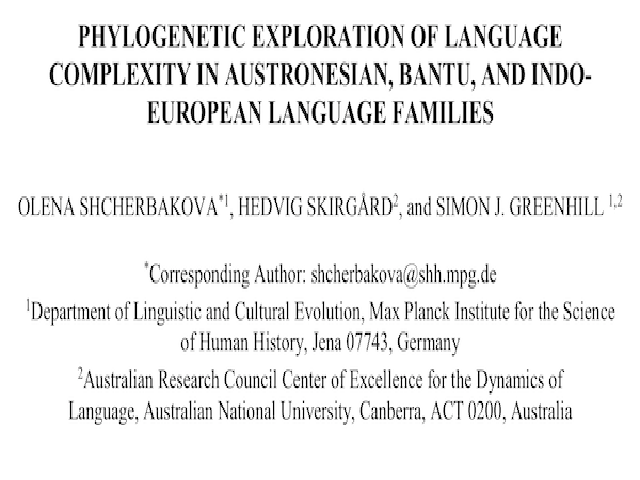Phylogenetic exploration of language complexity in Austronesian, Bantu, and Indo-European Language Families

Authors:
Citation:
Details:
Published: 4 April, 2020.
Download:
Abstract:
While language complexity has received attention from sociolinguistic, psycholinguistic, and computational perspectives, the processes of simplification and complexification over time remain challenging to examine and explain. One strand of research focuses on complexity ‘tradeoffs’ and ‘local complexity’ asking whether complexification in one grammatical domain necessitates simplification in another so that all languages are ’equi-complex’ (Miestamo, 2009, Sinnemäki, 2008). The tradeoffs may or may not occur between different language systems, such as phonetics and morphology (Shosted, 2006), morphology and syntax (Dahl, 2009, Sinnemäki, 2008), morphosyntax and vocabulary size (Reali et al., 2018), and morphosyntax and semantics (Bisang, 2009). However, most studies agree that local complexity across different domains varies between languages and there is little evidence for tradeoffs. Instead, there appear to be evidence of considerable variation in the causes and effects of complexity.
Related links / Media:
Nothing found.